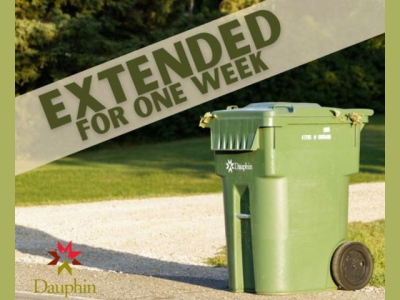Being prepared before you start seeding is critical to avoiding risk and potential fines.
The Manitoba Farm Safety Program identified ways people can ensure their success.
- Train your help
All farms in Manitoba are required by law to provide, and keep records of safety orientation for all workers - paid or unpaid, causal or otherwise. In the event of Workplace Safety and Health carrying out a general inspection or investigating a serious injury or fatality on your farm, they can ask to see these training records.
- Know when escort vehicles and permits are required on provincial highways
Permits:
Overwidth permits are not required for any implements or farm tractors being operated or towed on a highway for agricultural purposes. However, height and length permits are required if exceeding the following:
- Height: 4.6 metres
- Length: 35.0 metres
Implements and farm tractors loaded on standard trailers must obtain overwidth permits if the load exceeds 6.1 metres in width. However, specialized trailers designed specifically to haul that particular implement do not require overwidth permits. Height and length permit restrictions still apply.
Escort vehicles:
Escort vehicles are not required for any implements or farm tractors being operated or towed on a highway for agricultural purposes.
If loaded on a trailer, an escort vehicle is required for loads up to 6.1 metres in width that protrude over the centre line of the highway and are subject to the following:
- One front escort vehicle on a 2 or 4 lane non-divided highway
- One rear escort vehicle on a 4 lane divided highway
All trailer loads exceeding 6.1 metres in width require one front and one rear escort on all highways.
The above is a partial summary of the provincial regulation, and does not include information regarding night time travel. For more information about permits and escort vehicles, contact the Manitoba Permit Services Office at 204-945-3961.
- Create or update descriptions of your farmland
Keep descriptions of, and directions to all farmland in the house, in the shop, in your equipment and in farm vehicles. This information should be easily accessible to family, neighbours and workers so they know exactly where to send help if needed.
- Restock and buy personal first aid kits
As per Manitoba safety and health legislation, you are responsible for ensuring that anyone working alone on your farm have immediate access to a personal first aid kit. It may be helpful to keep kits and farmland descriptions in the same spot in your farm equipment. Personal first aid kits must contain the following items:
- a) 10 sterile adhesive dressings, assorted sizes, individually packaged;
- b) 5 10 cm × 10 cm sterile gauze pads, individually packaged;
- c) a 10 cm × 10 cm sterile compress dressing, with ties;
- d) 5 antiseptic cleansing towelettes, individually packaged;
- e) a cotton triangular bandage;
- f) a waterproof waste bag;
- g) a pair of impervious disposable gloves;
- h) a roll of 2.5 cm adhesive bandage tape.
- Let other motorists decide when it is safe to pass you on roadways
While you may want to be polite and pull over to let cars pass you, it is not always a good idea to wave them around. By allowing motorists to decide for themselves when it is safe to pass, it takes the responsibility off you.
- Inspect and replace fire extinguishers
The following is a guideline for the type of fire extinguisher needed for each location on your farm:
Shops
- · 10 pound dry chemical, multi-purpose ABC extinguisher
- · 5 pound dry chemical ABC extinguisher
Barns
- · 10 pound dry chemical, multi-purpose ABC extinguisher
- · 2.5 gallon pressurized water extinguisher
Farm Vehicles
- · 5 pound dry chemical, multi-purpose ABC extinguisher
Combines
- · 10 pound dry chemical, multi-purpose ABC extinguisher
- · 2.5 gallon pressurized water extinguisher
Balers
- · 2.5 gallon pressurized water extinguisher
Tractors
- · 10 pound dry chemical, multi-purpose ABC extinguisher
Silos/Bins
- · 20 pound dry chemical, multi-purpose ABC extinguisher
- · 2.5 gallon pressurized water extinguisher
Remember, fight small fires only. Water extinguishers can only be used on crop, straw and grass-type fires. For any fire involving oil, grease or electrical a dry chemical extinguisher must be used.
On machinery, fire extinguishers should be mounted on the outside if possible.
- Inspect personal protective equipment
Replace any faulty or worn out personal protective equipment. Damaged safety harnesses and lanyards must be cut up prior to being disposed of, so if found, they cannot be used. Things to check for are distorted or broken D-rings, frayed or cut edges in the webbing, bent or rusty buckles and missing rivets.
- Polish up reflective signs and lights on your equipment
Inspect and clean off all lights and signage. Make sure turn signals and flashers work properly and that your safety reflective tape and slow-moving vehicle emblems are fully visible to other motorists.
- Support hydraulics during maintenance
Ensure you are using a second support system on machines that use hydraulics while performing maintenance. Two safety measures should be standard practice.
10. Don’t skip meals
Along with sleep, proper meals and getting plenty of water is key to reducing accidents by maintaining energy levels and alertness. Sleep deprivation and malnutrition slows response time, and that is when things can go wrong.







